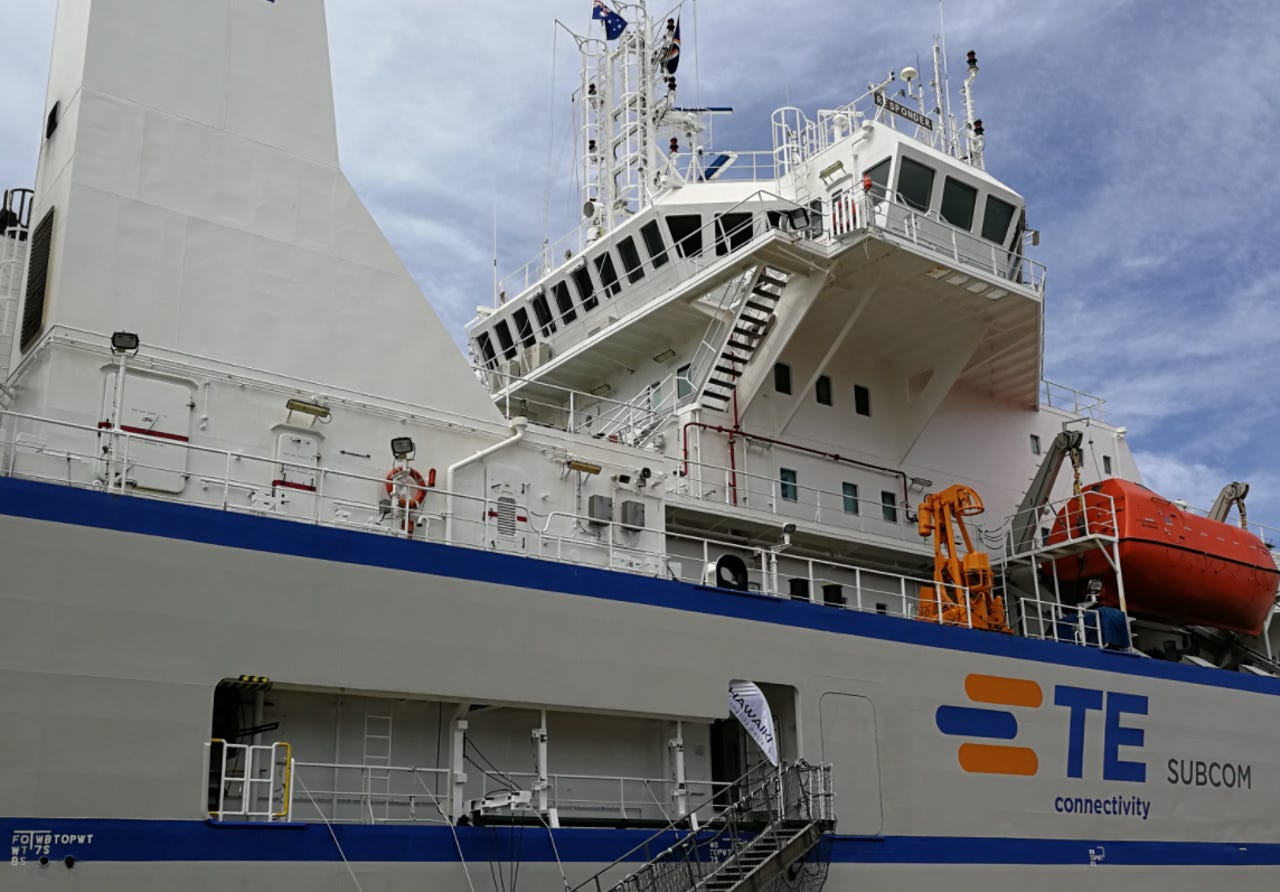Hawaiki partners with TE SubCom for second NOC

Hawaiki Submarine Cable LP has announced signing on TE SubCom to provide an additional network operations centre (NOC) to support its subsea cable system between Australia, New Zealand, the west coast of the United States, and Hawaii.
The backup NOC (B-NOC) services will be provided out of TE SubCom's Eatontown, New Jersey headquarters under its SubCom Global Services (SGS) portfolio, while the cable itself is largely controlled out of Australia- and New Zealand-based facilities.
"SGS provides a broad range of technical services that span the entire lifecycle of a subsea fibre-optic cable system, including cable system planning and configuration; permit investigation; preventative asset protection; terrestrial infrastructure development; and operations, alarm, security, and maintenance network management, thus enabling system owners to focus on their core business, while relying on TE SubCom's industry expertise for the rest," TE SubCom said.
The deal is part of ensuring network support and security, with the secondary NOC to add further resilience to its operations, Hawaiki's chief network officer Florent Blot said, which now involve control centres across Australia, New Zealand, and the US.
The $300 million Hawaiki Transpacific Submarine Cable System went live last month, with anchor customers including Vodafone New Zealand, Amazon Web Services (AWS), American Samoa Telecommunications Authority (ASTCA) and Research, and Education Advanced Network New Zealand (REANNZ).
"Hawaiki is the fastest and largest cross-sectional capacity link between the US and Australia and New Zealand. It will significantly enhance our connectivity to the rest of the world and, ultimately, improve the everyday lives of our communities," CEO Remi Galasso said in July.
This followed Hawaiki completing its final landing in American Samoa in June, with the United States territory to gain access to 200Gb of additional capacity from the cable.
The US domestic segment between Oregon and Hawaii had been completed during the final quarter of 2017, gaining a US Federal Communications Commission (FCC) licence in December.
Hawaiki then began laying the international portion of its subsea cable in November, and announced reaching the halfway point in its rollout across the Pacific Ocean in January.
"The system includes some branching units as well for the islands -- American Samoa is already in, and we expect a few more coming in the next few months," Galasso told media at the time.
"We have included in the system a branching unit for Fiji, another one for Tonga, and another one for the French territory of New Caledonia."
The cable has three fibre pairs: Two between Sydney and the US, and one from New Zealand to the US.
Two maintenance vessels, one based in Noumea and the other in Vancouver, are set to repair the system over the next 25 years, with the lifespan of the cable system guaranteed by TE SubCom.
Construction commenced on the Hawaiki subsea cable in April 2016, three years after first being announced. It has a design capacity of 43.8Tbps and makes use of TE SubCom's C100U+ Submarine Line Terminating Equipment (SLTE).
The cable is privately owned, having been co-developed by Sir Eion Edgar, a New Zealand businessman whose company provided "substantial" investment for the cable in July 2015, and Galasso. Also providing funding was Malcolm Dick, the co-founder of New Zealand telco Slingshot.
Subsea cables across the globe
- Google's Dunant transatlantic subsea cable between Virginia Beach in the United States to the French Atlantic coast
- The Indigo subsea cable system
- The Indian government's Chennai-Andaman and Nicobar islands subsea cable, being built by NEC
- The Australian government's Coral Sea subsea cable, being constructed by Vocus to connect Australia, Papua New Guinea, and Solomon Islands and funded through the foreign aid budget
- Vocus' Australia-Singapore Cable (ASC)
- Vocus' North West Cable System (NWCS) between Darwin and Port Hedland
- Southern Cross Cables' NEXT subsea cable system between Australia, New Zealand, and the United States, being built by SubPartners
- The Trident subsea cable system connecting Perth with Singapore via Indonesia
- The Jupiter subsea cable connecting the US, Japan, and the Philippines and being built by a consortium including Facebook, Amazon, SoftBank, NTT Com, PLDT, and PCCW
- The Hawaiki subsea cable between Australia, New Zealand, and the US
- Superloop's Hong Kong cable
- Telstra's Hong Kong Americas (HKA) cable between Hong Kong and the US
- Telstra's Pacific Light Cable Network (PLCN) between Hong Kong and the US
- Google's Japan-Guam-Australia (JGA) cable system
- The Asia-Pacific Gateway (APG) subsea cable connecting China, Hong Kong, Japan, South Korea, Malaysia, Taiwan, Thailand, Vietnam, and Singapore, owned by a consortium including China Telecom, China Unicom, China Mobile, NTT Communications, KT Corporation, LG Uplus, StarHub, Chunghwa Telecom, CAT, Global Transit Communications, Viettel, and VNPT, and being constructed by NEC
- The Southeast Asia Japan 2 cable (SJC2), which will have 11 landing stations in Singapore, Thailand, Cambodia, Vietnam, Hong Kong, China, South Korea, Taiwan, and Japan, being built by NEC and funded by a consortium including China Mobile International, Chunghwa Telecom, Chuan Wei, Facebook, KDDI, Singtel, SK Broadband, and VNPT
- The Bay to Bay Express Cable System (BtoBE), connecting Singapore and Hong Kong with the US, being funded by consortium including Facebook, Amazon Web Services (AWS), and China Mobile International, and being built by NEC
